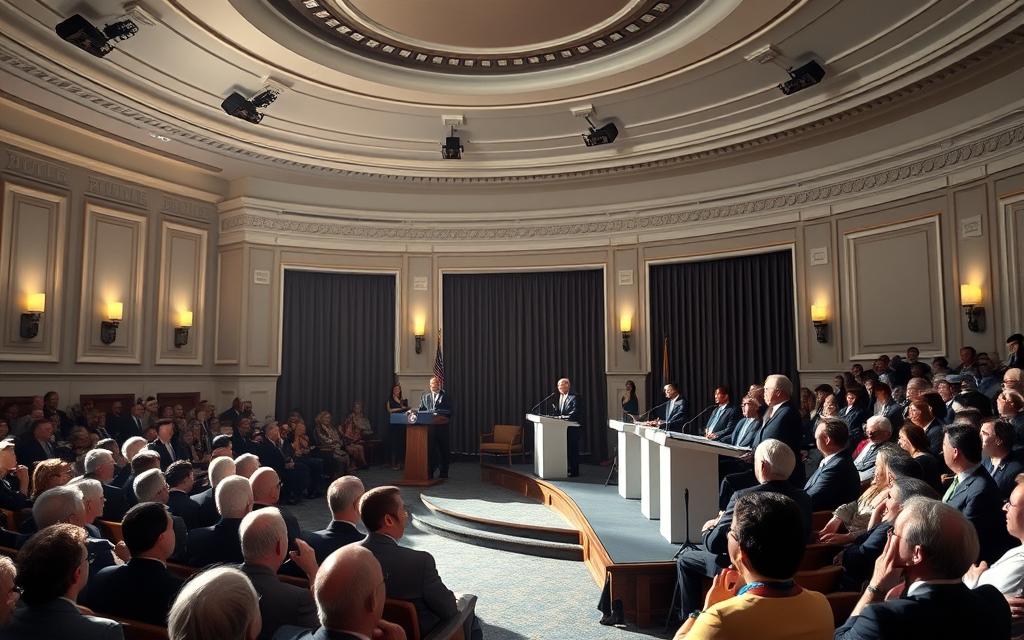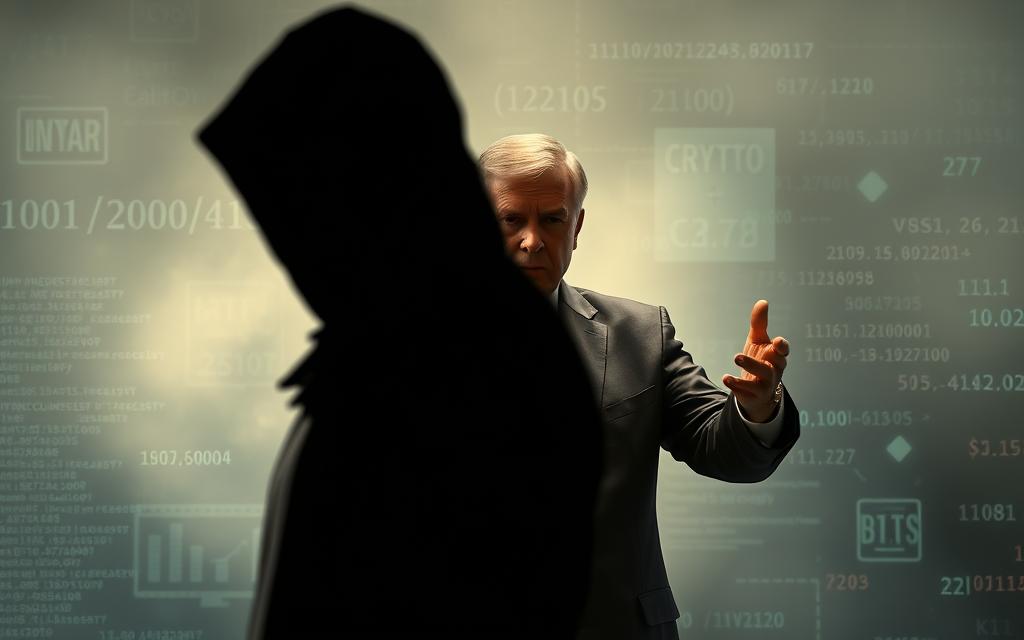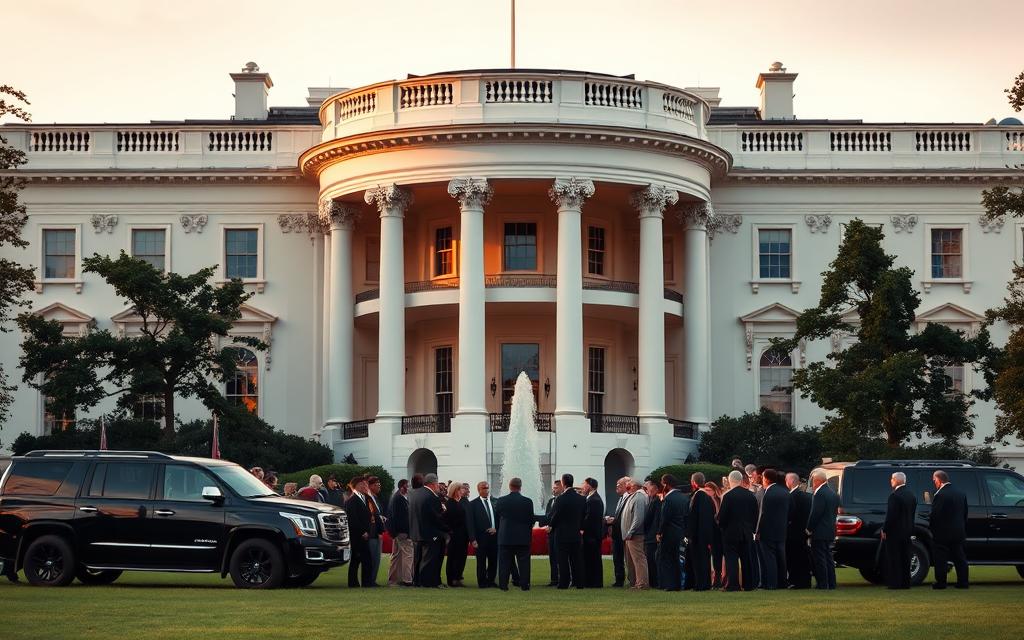Table of Contents
Mark your calendars for March 7, the historic date of the first White House gathering focused on digital assets. This high-profile event, initiated by President Donald Trump, brings together industry leaders and policymakers to shape the future of blockchain regulation.
The summit follows a pivotal March 6 executive order establishing a Strategic Bitcoin Reserve. Over 25 participants, including members of the Presidential Working Group, will attend. Discussions will center on balancing innovation with consumer protections.
Speculation continues about potential surprise attendees from major financial institutions. Observers anticipate this meeting could redefine America’s stance on emerging technologies. The outcomes may influence global markets for years to come.
What Time Is Trump’s Crypto Summit? Schedule and Format
Industry leaders will gather at 2:30 PM ET (6:30 PM UTC) for a closed-door discussion on blockchain regulation. The four-hour session, ending at 6:30 PM ET, prioritizes direct dialogue between policymakers and handpicked executives.
Strict Attendance and Security Protocols
Despite overwhelming interest, the White House crypto summit enforces a 25-person cap. Enhanced security measures restrict access to confirmed members of the working group, ensuring focused debates on market stability.
Roundtable Dynamics and Follow-Up Events
David Sacks, a noted tech entrepreneur, will moderate the roundtable. A secondary reception allows excluded industry stakeholders to engage informally. This dual structure balances exclusivity with broader participation.
For deeper insights into the summit’s agenda, explore our analysis of the White House crypto summit and its potential market impact.
Agenda and Notable Speakers at the White House Crypto Summit
Key figures in blockchain innovation will gather for this landmark policy discussion. The event unites industry leaders and government officials to address pressing challenges in the digital asset space.

Confirmed Attendees: Industry and Government
Over 22 executives and regulators are confirmed, including:
- Tyler and Cameron Winklevoss (Gemini founders)
- Brian Armstrong (Coinbase CEO)
- Michael Saylor (MicroStrategy Executive Chair)
Government members include SEC Chair Paul Atkins and Treasury Secretary Scott Bessent. Notably, Tether and Binance CEOs declined invitations.
| Role | Name | Organization |
|---|---|---|
| Regulator | Paul Atkins | SEC |
| Executive | Brian Armstrong | Coinbase |
| Investor | Michael Saylor | MicroStrategy |
Policy Focus and Parallel Events
Discussions will prioritize banking access reforms and enforcement adjustments. The CFTC will host a separate forum with Ripple and Circle executives, expanding the crypto industry dialogue.
This dual approach ensures comprehensive coverage of regulatory and growth strategies. Outcomes could reshape how government engages with blockchain technologies.
Trump’s Executive Order: Strategic Bitcoin Reserve Explained
Criminal seizures now fuel America’s first national Bitcoin reserve under Trump’s directive. The March 6 executive order allocates 200,000 BTC—confiscated from illicit activities—to a federal treasury, bypassing taxpayer funding.
How the Reserve Works
Valued at ~$14 billion (current prices), the seized assets eliminate $18 billion in sell-side pressure, per Coinbase’s analysis. Unlike community hopes for new purchases, the reserve repurposes existing holdings. David Sacks confirmed: “Zero public funds were used—this is asset recycling.”
Market Reactions and Long-Term Effects
Analyst Tim Grogan’s sell-pressure reduction claim hinges on withheld BTC entering circulation. Critics argue the immediate market impact is limited, but investors note long-term benefits:
- Stabilized supply: Locked BTC reduces volatility.
- Regulatory precedent: Sets a framework for state-held digital assets.
- Global positioning: U.S. gains leverage in crypto diplomacy.
The strategic Bitcoin reserve signals a shift from ad-hoc seizures to structured treasury management—a model other nations may replicate.
Controversies and Challenges Surrounding the Summit
Ethical dilemmas overshadow the high-stakes dialogue on blockchain governance. While the summit aims to shape policy, scrutiny mounts over its participants’ financial stakes and the broader risks to investors.
Conflict of Interest Concerns
President Trump’s partnership with World Liberty Financial, a firm exploring digital assets, fuels transparency debates. Critics argue his family’s “Trump” and “Melania” memecoins blur lines between public service and private gain.

10x Research notes: “The Strategic Bitcoin Reserve’s reliance on seized funds doesn’t erase questions about donor influence.” Some attendees reportedly contributed to pro-Trump PACs, raising concerns about regulatory fairness.
Memecoin Speculation and Consumer Risks
The summit sidelines discussions on volatile meme currency, despite their popularity. Industry leaders are split—some dismiss them as gambles, while others warn of systemic investors exposure to pump-and-dump schemes.
Key objections include:
- Consumer harm: Retail traders often bear losses when hype fades.
- Regulatory gaps: No clear rules prevent market manipulation.
- Taxpayer exposure: Bailout risks if memecoin crashes affect banks.
These conflicts reveal deep fractures in the industry’s approach to balancing innovation with accountability.
Conclusion: What the Summit Means for Crypto’s Future
March 20 will reveal the next steps in Trump’s digital asset strategy. The first White House meeting on blockchain signaled intent, but lasting change requires Congressional action. Analysts debate whether the strategic Bitcoin reserve or a potential crypto czar appointment will drive real reform.
Symbolically, the summit positions the U.S. as a leader in cryptocurrencies. Practically, the market awaits details from the NY Digital Asset Summit speech. Legislative hurdles remain, especially for the March 6 order to gain full traction.
Industry leaders now weigh short-term wins against long-term regulatory clarity. The event’s legacy may hinge on follow-through—balancing innovation with accountability in this fast-evolving space.
FAQ
When does the event start and end in ET and UTC?
The summit begins at 10:00 AM ET (2:00 PM UTC) and concludes by 4:00 PM ET (8:00 PM UTC).
Who are the confirmed speakers and attendees?
Key figures include David Sacks, industry CEOs, and government officials like the Crypto Czar.
What topics will be discussed at the roundtable?
Discussions focus on regulatory policies, digital asset growth, and strategic Bitcoin reserve plans.
How does Trump’s executive order affect the market?
The March 6 order proposes a strategic Bitcoin reserve, influencing investors and taxpayer funds.
Are there concerns about conflicts of interest?
Critics highlight potential ties between President Donald Trump and crypto industry members.
What risks do memecoins pose?
Speculative trading of cryptocurrencies like memecoins raises volatility and regulatory concerns.









